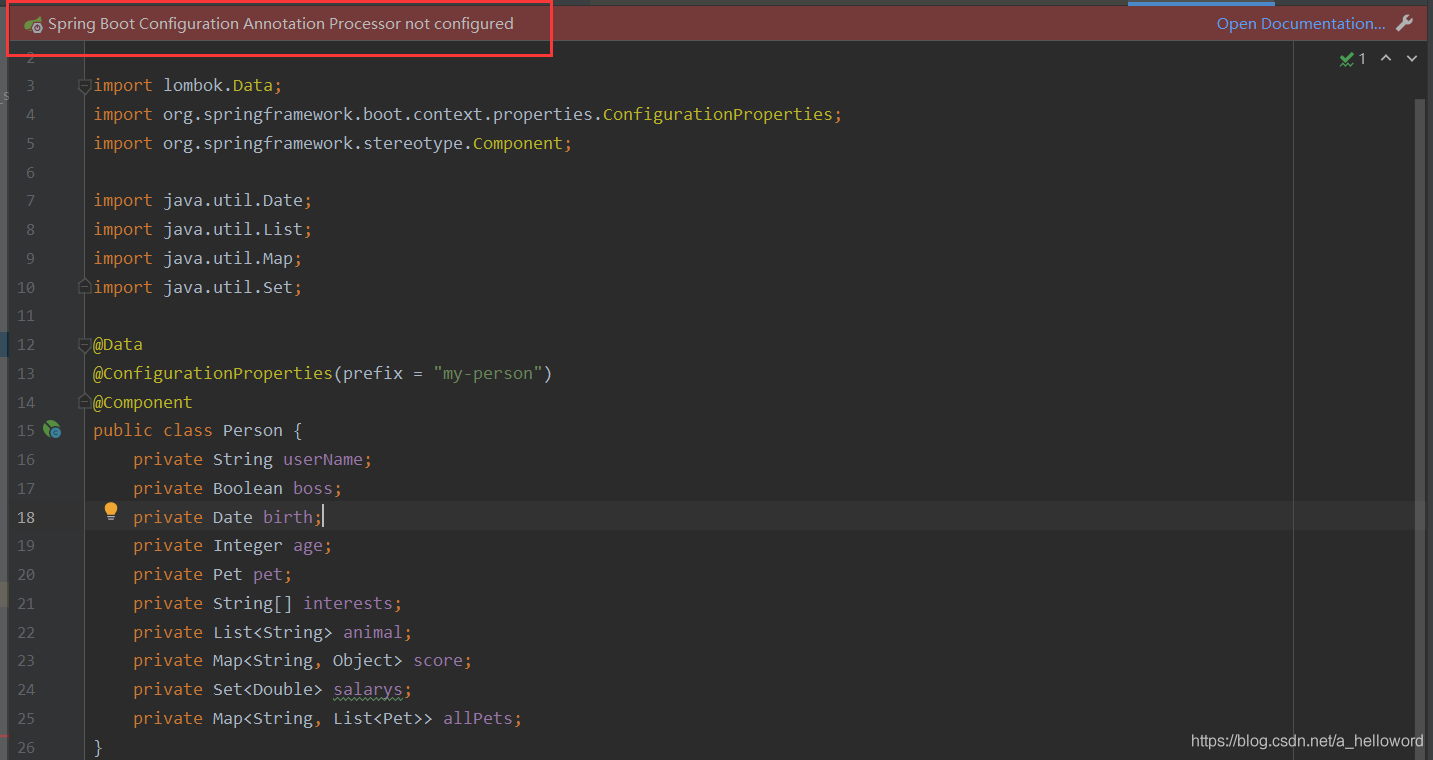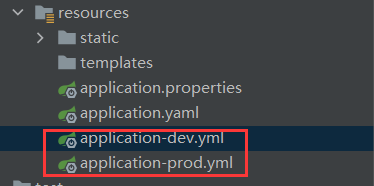源码基于SpringBoot 2.4.4
1、认识配置文件
1.1 配置文件的加载
创建SpringBoot项目的时候,会自动创建一个application.properties文件,该文件是SpringBoot默认的配置文件。
SpringBoot在启动的时候会默认去寻找并加载application.properties文件和application.yaml文件,在以下路径中寻找:
(1)classpath目录下
(2)classpath目录下的config文件夹
(3)项目根目录
(4)项目根目录下config文件夹的子文件夹
(5)项目根目录下config文件夹

优先级从高到低,并且后加载的会覆盖前面加载的。
参考官方文档:https://docs.spring.io/spring-boot/docs/current/reference/html/features.html
1.2 配置文件类型
(1)properties后缀:application.properties
(2)yaml后缀:application.yaml
1.3 两种配置文件比较
- 可以使用 @PropertySource 注解加载自定义的 Properties 配置文件,但无法加载自定义的 YAML 文件。
- YAML 支持列表的配置,而 Properties 不支持。
- 配置文件加载顺序:properties、xml、yml、yaml(后加载的会覆盖前面加载的)
2、yaml配置文件
2.1 介绍
YAML 是 "YAML Ain't Markup Language"(YAML 不是一种标记语言)的递归缩写。在开发的这种语言时,YAML 的意思其实是:"Yet Another Markup Language"(仍是一种标记语言)。
非常适合用来做以数据为中心的配置文件
2.2 基本语法
(1)key: value。冒号与value之间必须有一个空格。
(2)大小写敏感。
(3)使用缩进表示层级关系。
(4)缩进不允许使用tab,只能使用空格。
(5)缩进的空格数不重要,只要相同层级的元素左对齐即可。
(6)# 后面跟注释内容
(7)字符串无须加引号。""会进行转义。比如'\n'就输出\n,但"\n"则会输出换行。
2.3 数据类型
(1)字面量:单个的、不可再分的值。date、boolean、string、number、null
k: v
(2)对象:键值对的集合。map、hash、set、object
# 行内写法
k: {k1:v1,k2:v2,k3:v3}
# 或
k:
k1: v1
k2: v2
k3: v3
(3)数组:一组按次序排列的值。array、list、queue
# 行内写法
k: [v1,v2,v3]
# 或
k:
- v1
- v2
- v3
2.4 实例
定义两个实体类Person和Pet,并且Person类和配置文件的属性绑定
@Data
@ConfigurationProperties(prefix = "my-person")
@Component
public class Person {
private String userName;
private Boolean boss;
private Date birth;
private Integer age;
private Pet pet;
private String[] interests;
private List<String> animal;
private Map<String, Object> score;
private Set<Double> salarys;
private Map<String, List<Pet>> allPets;
}
@Data
public class Pet {
private String name;
private Double weight;
}
在yaml文件中配置Person的属性
my-person:
user-name: CodeTiger
boss: true
birth: 1996/11/29
# 可以使用random来生成各种不同类型的随机值
age: ${random.int}
pet:
name: tomcat
weight: 100
interests: [basketball, football]
animal:
- jerry
- tom
score:
english:
first: 30
second: 40
third: 50
math: [131,140,148]
chinese: {first: 128, second: 136}
salarys: [3999,4999.98,5999.99]
allPets:
sick:
- {name: tom}
- {name: jerry,weight: 47}
health: [{name: mario,weight: 47}]
2.5 开启自动提示
我们的类和配置文件属性绑定时,在配置文件中设置属性发现并没有自动提示。在我们为类加上@ConfigurationProperties注解的时候,idea就会提示我们配置Annotation Processor
https://docs.spring.io/spring-boot/docs/2.4.4/reference/html/appendix-configuration-metadata.html

根据文档,我们只需要在pom.xml中增加相关的jar包即可。
<dependency>
<groupId>org.springframework.boot</groupId>
<artifactId>spring-boot-configuration-processor</artifactId>
<optional>true</optional>
</dependency>
在打包的时候,我们不需要把它打入jar包,所以去除
<build>
<plugins>
<plugin>
<groupId>org.springframework.boot</groupId>
<artifactId>spring-boot-maven-plugin</artifactId>
<configuration>
<excludes>
<exclude>
<groupId>org.springframework.boot</groupId>
<artifactId>spring-boot-configuration-processor</artifactId>
</exclude>
</excludes>
</configuration>
</plugin>
</plugins>
</build>
3、使用yaml实现多环境配置
我们可以把多个环境的配置写在一个文件里,可以使用符号---进行分割,如下application.yaml文件
spring:
profiles:
# 使用开发环境的配置
active: dev
---
# 开发环境配置
server:
port: 8888
spring:
profiles: dev
---
# 生产环境配置
server:
port: 8888
spring:
profiles: prod
也可以不同的开发环境写在不同的配置文件,比如在resources目录下创建两个配置文件:application-dev.yml 和 application-prod.yml 此时,分别表示开发环境中的配置和生产环境中的配置。

然后在application.yaml文件中指定使用哪个配置文件即可。
我们还可以通过在代码中指定使用哪种环境的配置
import org.springframework.boot.autoconfigure.SpringBootApplication;
import org.springframework.boot.builder.SpringApplicationBuilder;
@SpringBootApplication
public class TestApplication {
public static void main(String[] args) {
SpringApplicationBuilder builder = new SpringApplicationBuilder(TestApplication.class);
builder.application().setAdditionalProfiles("dev");
builder.run(args);
}
}
当然也可以在使用命令启动jar包的时候指定
java -jar xxx.jar --spring.profiles.active=dev
bk




